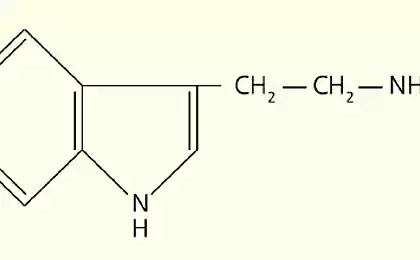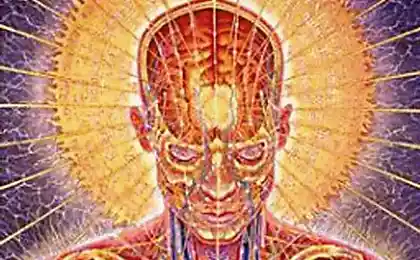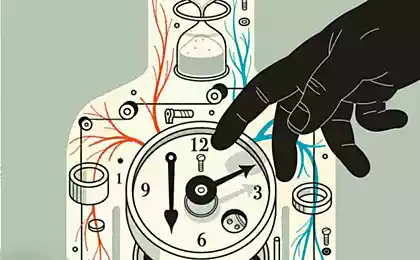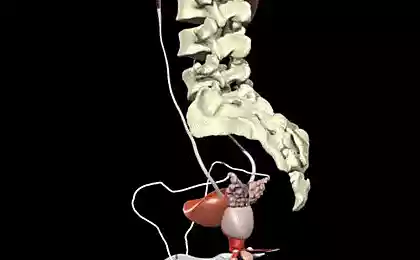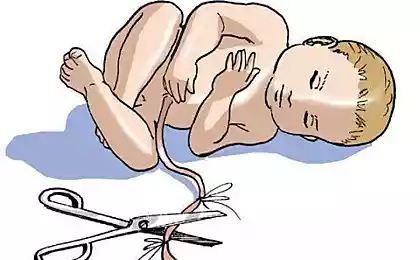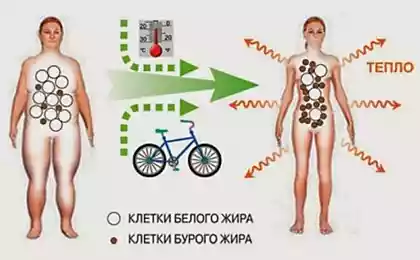172
9 Steps to Find Melatonin
It is also called the epiphysis or pineal gland. And it is as a result of the work of the epiphysis in updated conditions, in other words, a change in the wave frequency, that a person opens up a spiritual vision, or, as they call in the East, the Third Eye.
A person does not just change internally, he opens a storehouse of real knowledge, the realities of the higher worlds.
It is in the epiphysis that information matrices, peculiar holograms, contain information about everything that concerns this individual, including his previous lives, are stored.
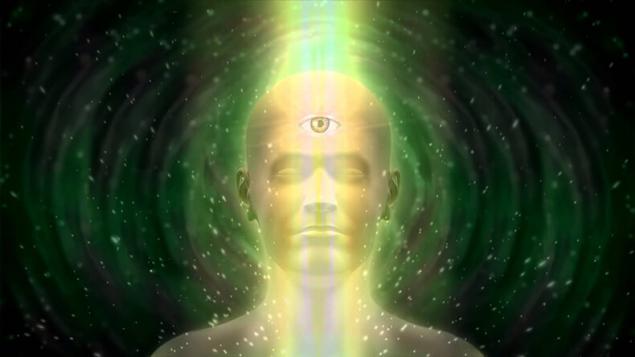
It's the most secret safe in memory.It has a double incombustible bottom because it is also a chakran. Everything you see during life, feel, experience, in general, all your internal and external is fixed in the pineal gland.
From a scientific point of view, the functional significance of the epiphysis for humans has not been sufficiently studied.
The secretory cells of the epiphysis secrete into the blood the hormone melatonin, synthesized from serotonin, which is involved in the synchronization of circadian rhythms (biorhythms “sleep – wakefulness”).
Scientists suggest that the aging process begins in the pineal gland due to decreasing melatonin production. This hormone itself has the properties of an antioxidant that helps fight aging-causing free radicals.
Before switching to energy practices, we need an uninterrupted vessel with a “throughput” of the gland of 40 hertz and above. Recall that the “standard person” resonant frequency of the pineal gland is only 7 hertz.
You simply cannot physically resonate 40 hertz if your pineal gland is not biologically ready.
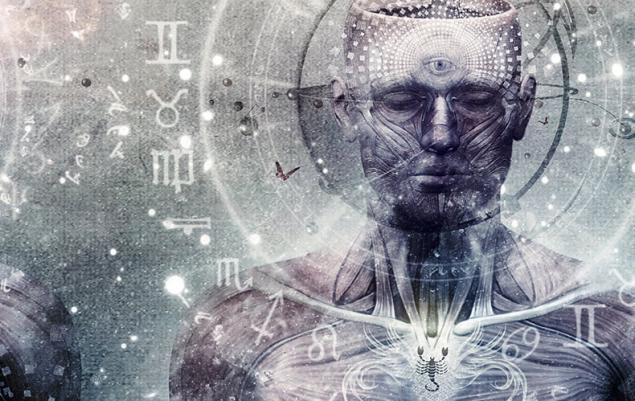
Nine steps to find melatonin.
Step one: Follow your daily rhythms.
Studies show that those who go to bed early, around 22 hours and get up at dawn, produce the most melatonin during the night and feel more energetic and workable the next day. Sleeping in the dark is only half the task. The second is to get as much light as possible in daylight. Set up a workplace near a large window and spend part of the daylight hours in the open air every day.
Step two: Eat foods rich in melatonin.
Among the richest sources are oats, corn cobs, rice, barley, and tomatoes and bananas. Carbohydrates help the body produce melatonin due to a special amino acid - tryptophan. A vegetarian diet should be followed, since protein foods, especially meat, saturate the blood with a large number of amino acids that compete with tryptophan for the right to enter the brain.
High-carbohydrate foods – bread, potatoes, pasta – provoke an “injection” of insulin, which displaces these competitors. Vitamins. Some of them increase the production of melatonin - for example, vitamins B3 and B6 (lack of the latter affects the elderly). A lot of vitamin B3 is contained in dried apricots, sunflower seeds, whole grains of wheat, barley. B6 can be obtained from carrots, hazelnuts, soybeans, lentils.
Step three: Protect your melatonin.
Caffeine, alcohol, nicotine – each of them can undermine the process of normal hormone production. Some medications have the same effect. If you are constantly taking any drugs, try to find out if they do not affect the level of melatonin.
Step four: Watch out for electromagnetic pollution.
Electromagnetic fields very strongly affect the work of the pineal gland - up to the suspension of melatonin production. Their main sources are computers, copiers, televisions, power lines, as well as poorly insulated wiring and even heated floors and certainly mobile phones. Electromagnetic fields negate the anti-cancer activity of melatonin, so limit your daily contact with them whenever possible.
Step five: Take care of the pineal gland.
Over time, this gland undergoes a so-called calcification process, and its productivity decreases. To prevent this, follow a plant-based diet rich in antioxidants that neutralize free radicals. Avoid fatty foods and never smoke.
Step Six: Perform yogic asanas.
Asanas have a subtle effect on our body and consciousness and free it from the crude patterns of thought. The best asana for the pineal gland is the posture of the hare (Shashaungasan), exerting pressure on the top of the head and directly stimulating the upper chakra and pineal gland. By increasing the production of melatonin, this asana gives calmness to the mind as well as enhances memory and concentration.
Step Seven: Shiva's Clock
The release of melatonin begins at sunset and reaches its peak at midnight, when the body and mind are most introspective. For thousands of years, yogis have taught that the best time to meditate is from 12 a.m. to 3 a.m., a time called the Shiva Clock. At this time, you can experience a complete immersion of the mind inward, inner peace and deep meditation.
Step eight: New Moon.
Once a month on a new moon, the pineal gland produces a relatively large amount of melatonin. A person experiences a sense of bliss and inner joy if he maintains the purity and sublimity of the mind. At this time, melatonin washes all the glands and makes the mind calm and directed inward.
If a person’s mind is involved in gross or externally directed thoughts, then melatonin simply burns out and a person cannot survive the delicate effect that it has on all glands of the endocrine system and on the mind. Therefore, many yogis on this day abstain from food and water and perform many spiritual practices that introvert, purify and elevate their consciousness.
Step Nine: Meditate regularly.
It has been found that daily meditation practices directly affect the pineal gland, pituitary gland and hypothalamus, and balance energy flows in the right and left hemispheres of the brain. The production of melatonin, as well as other brain hormones, increases, resulting in perfect emotional control.
20 cognitive errors that distort our reality
The Secret of Our Father's Prayer
The practice that most effectively develops the pineal gland and upper chakra is called dhyana, the 6th lesson of Ananda Marga meditation, which involves concentration and visualization on this gland. The pineal gland indirectly controls all the glands and chakras below – all 50 human tendencies, such as fear, jealousy, greed, love and attachment, etc. Therefore, someone who can control the pineal gland and upper chakra can completely control both the body and the mind.
Author: Tatiana Shelyug
P.S. And remember, just by changing our consumption – together we change the world!
Join us on Facebook, VKontakte, Odnoklassniki
Source: vk.com/ekoduh?w=wall-21293291_58889
A person does not just change internally, he opens a storehouse of real knowledge, the realities of the higher worlds.
It is in the epiphysis that information matrices, peculiar holograms, contain information about everything that concerns this individual, including his previous lives, are stored.

It's the most secret safe in memory.It has a double incombustible bottom because it is also a chakran. Everything you see during life, feel, experience, in general, all your internal and external is fixed in the pineal gland.
From a scientific point of view, the functional significance of the epiphysis for humans has not been sufficiently studied.
The secretory cells of the epiphysis secrete into the blood the hormone melatonin, synthesized from serotonin, which is involved in the synchronization of circadian rhythms (biorhythms “sleep – wakefulness”).
Scientists suggest that the aging process begins in the pineal gland due to decreasing melatonin production. This hormone itself has the properties of an antioxidant that helps fight aging-causing free radicals.
Before switching to energy practices, we need an uninterrupted vessel with a “throughput” of the gland of 40 hertz and above. Recall that the “standard person” resonant frequency of the pineal gland is only 7 hertz.
You simply cannot physically resonate 40 hertz if your pineal gland is not biologically ready.

Nine steps to find melatonin.
Step one: Follow your daily rhythms.
Studies show that those who go to bed early, around 22 hours and get up at dawn, produce the most melatonin during the night and feel more energetic and workable the next day. Sleeping in the dark is only half the task. The second is to get as much light as possible in daylight. Set up a workplace near a large window and spend part of the daylight hours in the open air every day.
Step two: Eat foods rich in melatonin.
Among the richest sources are oats, corn cobs, rice, barley, and tomatoes and bananas. Carbohydrates help the body produce melatonin due to a special amino acid - tryptophan. A vegetarian diet should be followed, since protein foods, especially meat, saturate the blood with a large number of amino acids that compete with tryptophan for the right to enter the brain.
High-carbohydrate foods – bread, potatoes, pasta – provoke an “injection” of insulin, which displaces these competitors. Vitamins. Some of them increase the production of melatonin - for example, vitamins B3 and B6 (lack of the latter affects the elderly). A lot of vitamin B3 is contained in dried apricots, sunflower seeds, whole grains of wheat, barley. B6 can be obtained from carrots, hazelnuts, soybeans, lentils.
Step three: Protect your melatonin.
Caffeine, alcohol, nicotine – each of them can undermine the process of normal hormone production. Some medications have the same effect. If you are constantly taking any drugs, try to find out if they do not affect the level of melatonin.
Step four: Watch out for electromagnetic pollution.
Electromagnetic fields very strongly affect the work of the pineal gland - up to the suspension of melatonin production. Their main sources are computers, copiers, televisions, power lines, as well as poorly insulated wiring and even heated floors and certainly mobile phones. Electromagnetic fields negate the anti-cancer activity of melatonin, so limit your daily contact with them whenever possible.
Step five: Take care of the pineal gland.
Over time, this gland undergoes a so-called calcification process, and its productivity decreases. To prevent this, follow a plant-based diet rich in antioxidants that neutralize free radicals. Avoid fatty foods and never smoke.
Step Six: Perform yogic asanas.
Asanas have a subtle effect on our body and consciousness and free it from the crude patterns of thought. The best asana for the pineal gland is the posture of the hare (Shashaungasan), exerting pressure on the top of the head and directly stimulating the upper chakra and pineal gland. By increasing the production of melatonin, this asana gives calmness to the mind as well as enhances memory and concentration.
Step Seven: Shiva's Clock
The release of melatonin begins at sunset and reaches its peak at midnight, when the body and mind are most introspective. For thousands of years, yogis have taught that the best time to meditate is from 12 a.m. to 3 a.m., a time called the Shiva Clock. At this time, you can experience a complete immersion of the mind inward, inner peace and deep meditation.
Step eight: New Moon.
Once a month on a new moon, the pineal gland produces a relatively large amount of melatonin. A person experiences a sense of bliss and inner joy if he maintains the purity and sublimity of the mind. At this time, melatonin washes all the glands and makes the mind calm and directed inward.
If a person’s mind is involved in gross or externally directed thoughts, then melatonin simply burns out and a person cannot survive the delicate effect that it has on all glands of the endocrine system and on the mind. Therefore, many yogis on this day abstain from food and water and perform many spiritual practices that introvert, purify and elevate their consciousness.
Step Nine: Meditate regularly.
It has been found that daily meditation practices directly affect the pineal gland, pituitary gland and hypothalamus, and balance energy flows in the right and left hemispheres of the brain. The production of melatonin, as well as other brain hormones, increases, resulting in perfect emotional control.
20 cognitive errors that distort our reality
The Secret of Our Father's Prayer
The practice that most effectively develops the pineal gland and upper chakra is called dhyana, the 6th lesson of Ananda Marga meditation, which involves concentration and visualization on this gland. The pineal gland indirectly controls all the glands and chakras below – all 50 human tendencies, such as fear, jealousy, greed, love and attachment, etc. Therefore, someone who can control the pineal gland and upper chakra can completely control both the body and the mind.
Author: Tatiana Shelyug
P.S. And remember, just by changing our consumption – together we change the world!
Join us on Facebook, VKontakte, Odnoklassniki
Source: vk.com/ekoduh?w=wall-21293291_58889
Developed a prototype of a flexible lithium-air battery
Prevention of cervical lumbago—exercises for Chelnokova
